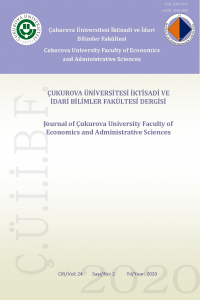Kısıtlar Teorisinin Diğer Muhasebe ve Yönetim Teknikleriyle İlişkisi
Firmaların rekabet üstünlüğü kazanarak, pazar paylarını ve kârlılıklarını arttırabilmelerinde, her sistemin en az bir kısıta sahip olduğunu ve firmaların kârlılık hedeflerine ulaşabilmeleri için bu kısıtların yönetimine odaklanmaları gerektiğini savunan kısıtlar teorisi, oldukça büyük önem arz etmektedir. Kısıtlar teorisinin diğer muhasebe ve yönetim teknikleriyle benzer ve farklı yönleri sözkonusudur. Kısıtlar teorisi kullanılarak alınan kararlar, geleneksel yöntemlere göre daha kârlı sonuç sağlayabilmektedir. Ayrıca kısıtlar teorisi diğer muhasebe ve yönetim tekniklerinden farklılık arz etse de, benzer amaçlarla kullanılması da sözkonusu olabilmektedir. Bu çalışmanın amacı kısıtlar teorisinin; tam ve değişken maliyet sistemi, faaliyete dayalı maliyet sistemi, tam zamanında üretim sistemi ve toplam kalite yönetimi arasındaki ilişkiyi ortaya koymaktır.
Anahtar Kelimeler:
Kısıtlar Teorisi, Süreç Katkısı, Tam ve Değişken Maliyet Sistemi, Faaliyete Dayalı Maliyet Sistemi
The Relationship of The Theory of Constraints with Other Accounting and Management Techniques
To be able to gain competitive advantage therefore increase market share and profitability of firms, theory of constraints which advocate that every firm has at least one constraint and to be able to achieve goal of high profitability firms should concentrate on management of these constraints is very important. There are similarities and differences between theory of constraints and the other accounting and management techniques. Decisions which are determined by applying theory of constraints can create more profitable solutions than traditional methods. In addition, although theory of constraints is different from the other accounting and management techniques, they can be applied for the same purposes. The aim of this study is to show relationship between theory of constraints and absorption-variable costing, activity based costing, Just-in-time production & inventory control system and total quality management.
Keywords:
Theory of Constraints, Throughput Absorption-Variable Costing, Activity Based Costing, Just-in-Time Production and Inventory Control System, Total Quality Management,
- ISSN: 1300-3747
- Başlangıç: 1987
- Yayıncı: Çukurova Üniversitesi
